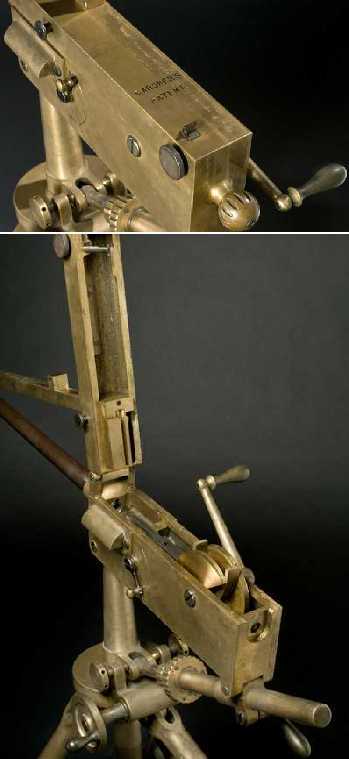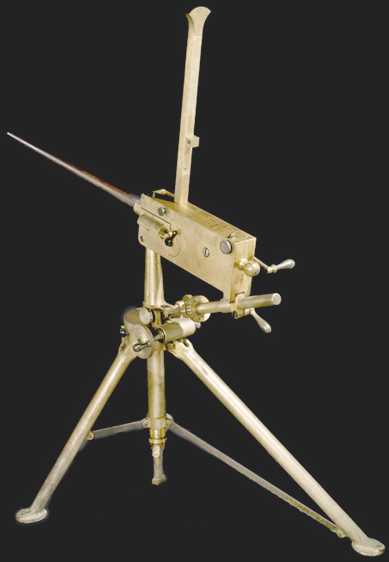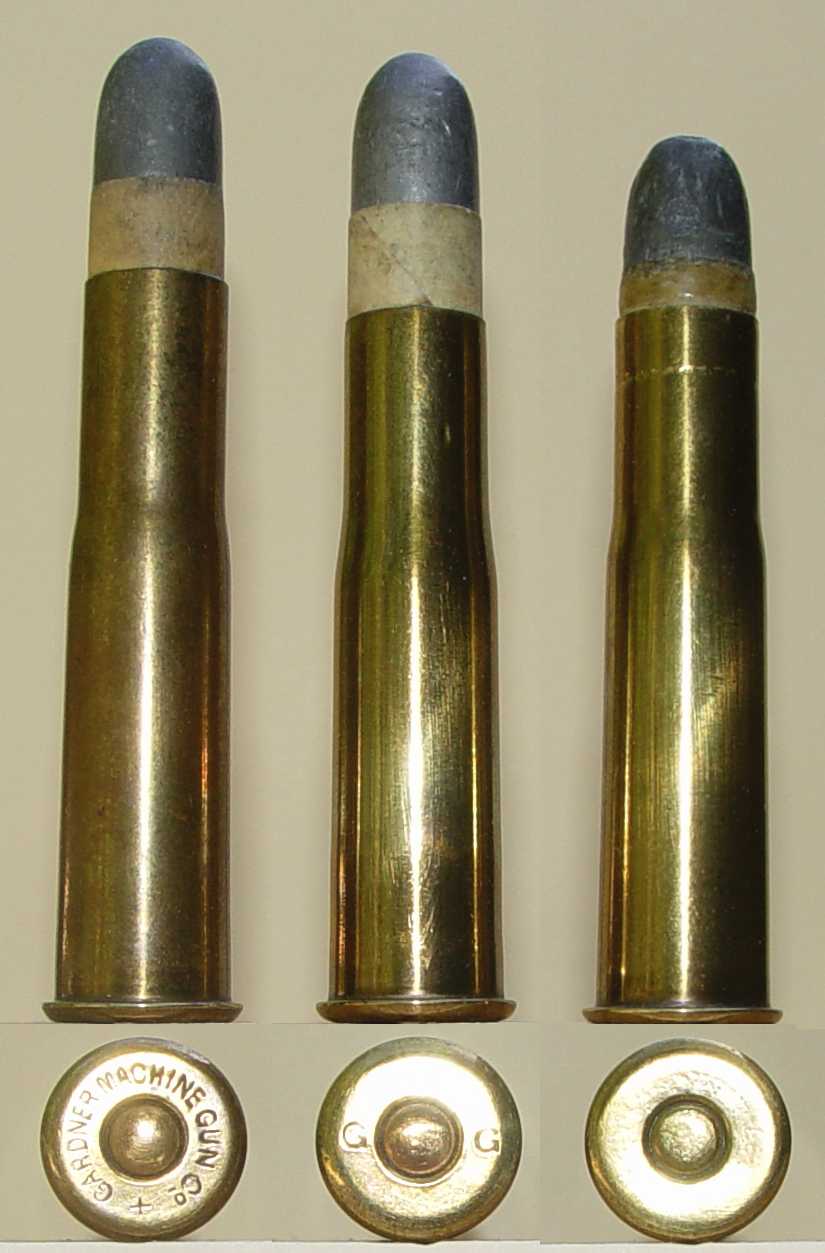|
THE CARTRIDGE COLLECTOR'S EXCHANGE |
| Contents
Cartridge
Lists
Prior Picture Pages:
Links to Other Sites
Cartridge Collectors Organizations:
Auctions:
Books:
Other Collector's Sites:
|
Home of the Old Ammo Guy's Virtual
Cartridge Trading Table
Picture Page September 2009 The Gardner machine gun and its cartridges......... Gardner Patent Machine Gun Serial Number 2 was recently sold at auction by Cowan's Auctions; the catalog description provided the following: 50-70 caliber, 32" barrel, Gardner Patent Gun Serial Number 2 is a single barrel with single feed guide and operated by hand. William Gardner is believed to have had Serial No. 2 manufactured, based upon his patents of 1876 and 1879, by the Pratt & Whitney Company. The weapon offered here is the Patent Gun that William Gardner had tested by the U.S. Navy, tried by the British Admiralty and British War Office, and other European governments. This is the very gun that Alexander Gardner took with him to Paris in 1878 for an exhibition in Paris with similar inventorís machine guns in which Mr. Gardnerís gun took first place. This gun was used in competition against the Gatling gun. Mr. Gardner's gun won in Europe, but not in America. Overall length 45", height 38".
These three pictures of Gardner's patent model machine gun are from Cowans April 29-30, 2009 Spring Firearms Auction Catalog. .
The Gardner machine guns used by the British were chambered for a .450
cartridge, three of which are shown in the picture below. As well as being
used in the Gardner machine guns, these cartridges were also used in guns
made by Gatling and Nordenfelt. The first two are headstamped GARDNER
MACHINE GUN CO and G G (Gardner and .
. . . . . . . . . . . The .45 Turkish Peabody-Martini cartridge...
In 1872, Oliver Winchester secured a contract with the Turkish Government to produce 200,000 Peabody-Martini rifles. While he would have preferred the contract to have been for his Model 1866 rifle, Winchester made the best of a bad situation and immediately sold the contract that same year to the Providence Tool Company, which had purchased the 1862 patent of Henry L. Peabody and had produced the Peabody rifle since that date. As a result, they were in a better position to produce the Turkish rifles than Winchester, as they essentially already had the tooling. The Peabody-Martini was basically an improved Peabody action; the sidelock of the Peabody had been replaced with a coil spring to operate the firing pin by Frederick Martini, a Swiss inventor. It should be noted that Winchester also secured contracts in 1874 and
1875 with the Turks for ammunition, producing a total of 200 million primed
empty cartridge cases and bullets for them. These contracts were not for
loaded cartridges because the Turks
The two pictures here show six examples of the .45 Turkish Peabody-Martini cartridge. One of the Winchester cases (and bullets, I assume) is shown on the left in the first picture. Another American company, the Union Metallic Cartridge Company, also contracted with Turkey to supply ammunition, which I would expect also consisted of primed cases and bullets; the second cartridge is one of theirs. The third cartridge was attributed to H. Gielguid in a collection I bought some years ago, but I don't know if this is correct; I have no information on this individual or company, other than to guess that it might be French..
. . .
A trio of early Karcher inside-primed cartridges...
Examples of the 7mm Karcher inside-primed cartridge are usually pretty easy to identify, as they often have a distinctive raised headstamp, either KARCHER Bte S.G.D.G. (meaning 'Brevette without the government's guarantee') or E.L (for E. Lecompte). Check my archived pictures for some headstamped examples (Click here). They will also be found headstamped A,N. and B.N. French mechanic P. Karcher received an 1875 patent for his primer, but is not thought to have ever actually produced cartridges. Instead, it is believed that Gevelot, and later SFM, produced most of the cartridges as well as empty cases for these. The three cartridges shown here are thought to have been produced by Gevelot prior to the 1875 Karcher patent date, possibly explaining why they are without headstamps. From the left, these include one loaded with a lead bullet, a paper hulled shot load, and a flare, which has a brass tube containing some type of propelling/pyrotechnic mixture. All three of these show the Karcher style knurled case cannelure, which holds the primer anvil in place inside the head, making identifying them easier. It is interesting to note that this primer is quite similar to the earlier Benet primer which preceded it by a few years, leading one to speculate that Karcher's primer design may not have been entirely his own. . . .
|



 Gatling?),
respectively; the third has no headstamp.
Gatling?),
respectively; the third has no headstamp.